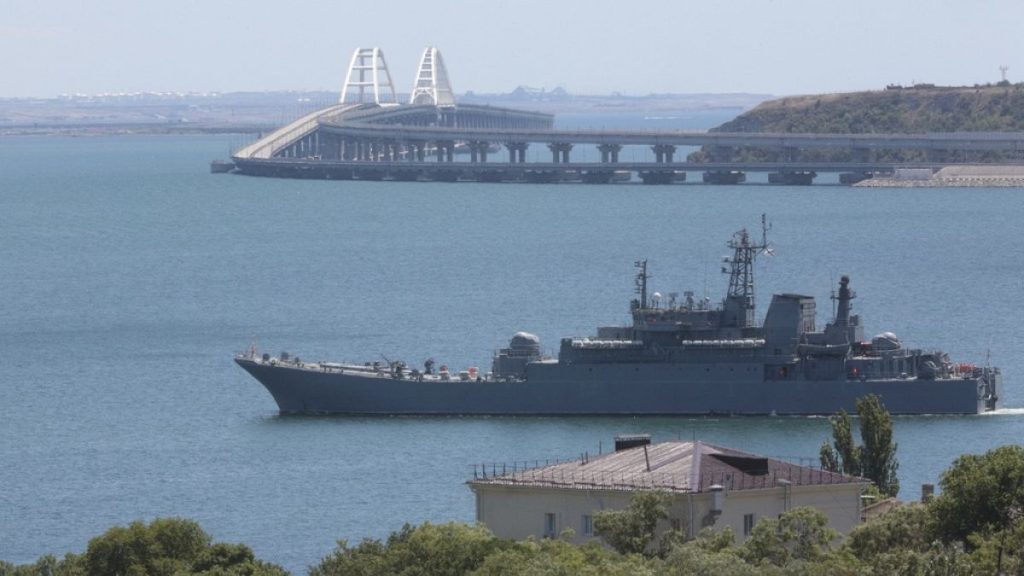Multiple explosions were reported in Crimea, with Ukraine striking a ferry crossing in the city of Kerch and a boat in the Russian region of Krasnodar. The extent of the damage and whether the boat targeted was military was not disclosed. Russian forces destroyed several Ukrainian drones in the Black Sea, while Ukraine has a history of attacking targets in Russian-occupied Crimea since Moscow’s full-scale invasion in 2022. Despite previous attempts to disrupt infrastructure in Crimea, such as the Kerch Bridge, Ukraine’s recent incursion into Russian territory has shifted the focus towards larger, strategic goals.
The Ukrainian assault on Crimea comes as a part of a larger operation into Russian territory, with the recent capture of the Russian town of Sudzha marking the biggest assault on Russian soil since World War II. President Zelenskyy announced the establishment of a command office in Sudzha, suggesting Ukraine’s intent to remain in the Kursk region indefinitely or as a strategic move against Moscow. The Kremlin’s reaction to this ongoing operation includes accusations that the West, particularly NATO and Western special services, were behind the incursion in Kursk. These claims were made by Nikolai Patrushev, a close ally of Russian President Putin and known for his conspiracy theories.
The attacks on Crimea have caused disruptions, including power outages and traffic delays on bridge crossings, but the targeted destruction of the Kerch Bridge has been deemed less useful due to changes in Russian military strategy. Ukrainian intelligence chief Kyrylo Budanov hinted at a potential plan to target the bridge, which Moscow has recently fortified. Despite these challenges, Ukraine’s continued incursion into Russian territory signals a shift in military tactics, with a focus on strategic gains rather than symbolic hits like the Kerch Bridge. The recent capture of Sudzha highlights Ukraine’s push into Russian territory and its attempt to establish a presence deep within the country.
The ongoing conflict between Ukraine and Russia has escalated in recent months, with Ukraine’s attacks on Crimea and incursion into Russian territory marking significant military actions. The assault on the Crimean peninsula has caused disruptions and tension in the region, while the capture of Sudzha represents a major milestone in the conflict. President Zelenskyy’s announcement of a command office in Sudzha indicates Ukraine’s long-term strategy in the Kursk region, which may have implications for the broader conflict with Russia. The Kremlin’s response to these developments, including accusations of Western involvement in the incursion, reflects the escalating rhetoric and tensions between the two countries.
The attacks on Crimea and the capture of Sudzha demonstrate Ukraine’s commitment to pushing further into Russian territory and disrupting Moscow’s military operations. The focus on strategic gains, rather than symbolic hits like the Kerch Bridge, suggests a shift in Ukraine’s military tactics and objectives. The ongoing conflict between Ukraine and Russia has raised concerns about the potential for further escalation and the involvement of other countries, such as NATO and Western special services. The situation in Crimea and the broader region remains highly volatile, with the potential for continued violence and conflict between the two countries.


